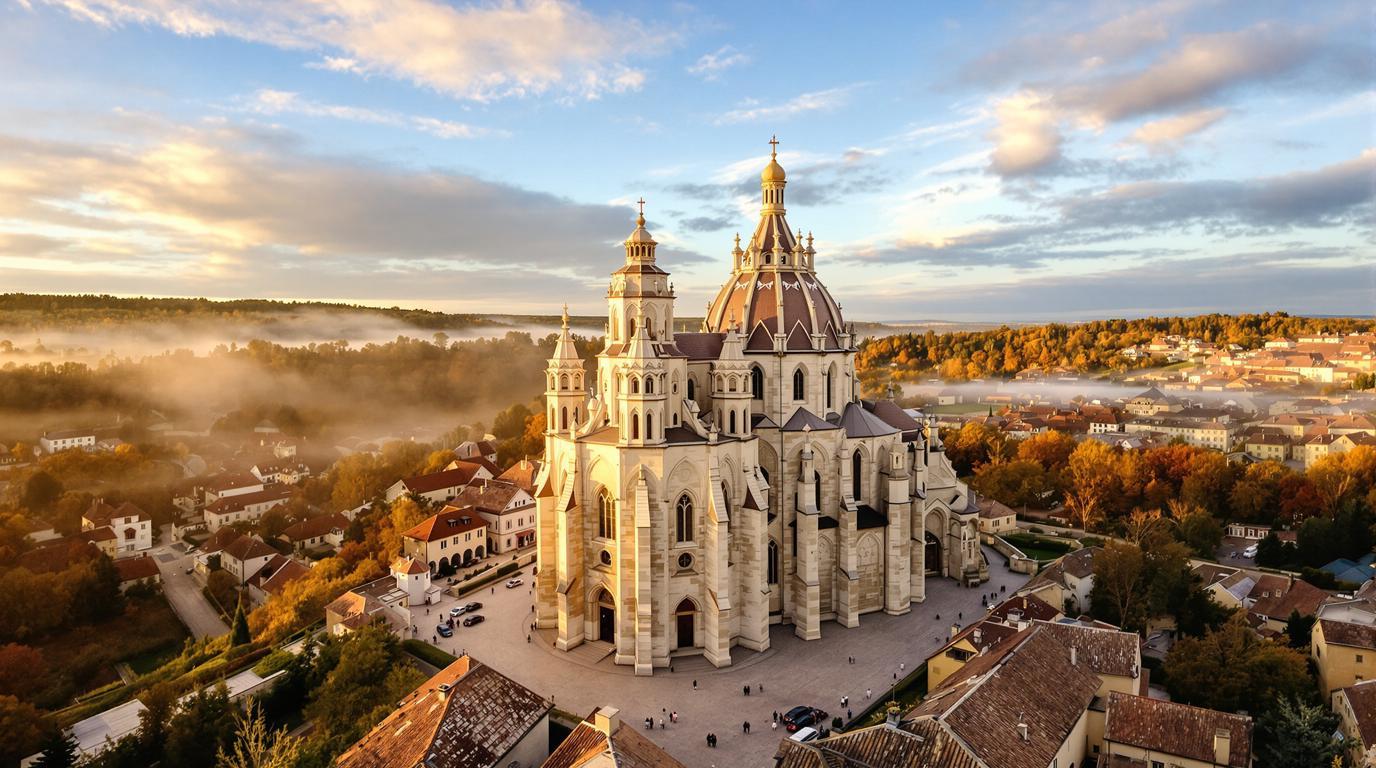A tiny French village of just 434 souls harbors one of Europe’s most magnificent UNESCO treasures – a basilica so extraordinary that it draws nearly a million visitors annually. Vézelay, perched atop a Burgundian hill, represents that rare alchemy where profound spiritual significance meets architectural genius in perfect harmony.
A medieval masterpiece hiding in plain sight
The Basilica of Sainte-Marie-Madeleine dominates the hilltop village of Vézelay, its imposing Romanesque silhouette visible for miles across the verdant Burgundy countryside. Built between 1120 and the 13th century, this architectural marvel was designated a UNESCO World Heritage site in 1979 – a testament to its extraordinary cultural value.
“What makes Vézelay remarkable is the contrast between its tiny population and its monumental cultural footprint,” says local historian Marie Dubois. “Few places on earth maintain such authentic medieval ambiance while hosting so many pilgrims and visitors.”
Where 434 villagers welcome 800,000 visitors
The math is staggering – each local resident effectively “hosts” over 1,800 visitors annually. Yet Vézelay maintains its authentic charm, with narrow cobblestone streets winding between well-preserved medieval buildings. The village boasts 67 classified historic monuments concentrated in a space tiny enough to explore entirely on foot.
Like the transparent geodesic domes that allow visitors to sleep under the stars in the French Alps, Vézelay offers an immersive experience that connects visitors to something greater than themselves.
A basilica that tells stories in stone
The basilica’s most striking feature is its extraordinary tympanum – a semicircular stone carving above the main entrance depicting Christ surrounded by his apostles. The exceptional sculptural work throughout the church narrates biblical stories through meticulously carved stone, a medieval picture book for pilgrims who couldn’t read.
“The play of light inside the basilica isn’t accidental,” explains Father Laurent, resident priest. “During summer solstice, sunlight creates a pathway of illumination down the central nave – a deliberate architectural feature symbolizing divine presence.”
Pilgrimage crossroads with ancient roots
Since the 11th century, when the relics of Mary Magdalene arrived, Vézelay has served as a major pilgrimage destination. The village became a crucial starting point for the famous Camino de Santiago leading to Spain, similar to how certain Welsh islands preserve ancient spiritual pathways.
This spiritual significance continues today, with pilgrims arriving alongside culture-seekers and history enthusiasts, creating a unique atmosphere where modern tourism and centuries-old traditions coexist.
Beyond the basilica: hidden treasures
While the UNESCO basilica draws crowds, savvy visitors explore beyond. The Musée Zervos houses a surprising collection of modern art – including works by Picasso and Miró – creating a fascinating juxtaposition with the medieval surroundings.
The village’s relationship with wine is less known than certain rare island vineyards near Venice, but equally fascinating. Local vintners maintain centuries-old traditions in stone cellars beneath unassuming homes.
A photographer’s paradise
Morning light bathes the village in gold, illuminating honey-colored stone walls against terracotta roofs. During autumn, misty mornings create ethereal scenes as the basilica emerges from fog. The village offers photographic opportunities rivaling the dramatic night skies of certain Scottish islands.
“Each season transforms Vézelay completely,” notes photographer Jean Moreau. “Winter brings intimate quiet, spring explosion of color, summer vibrant activity, and autumn a golden melancholy that captures the village’s soul.”
Sacred plants and healing traditions
The surrounding countryside reveals another layer of history – medicinal herb gardens with plants used since medieval times. While not as ancient as certain sacred Andean plants with 4,000 years of history, these French herbal traditions represent living cultural heritage.
Local herbalist Claudine Petit still crafts remedies using techniques passed down through generations: “These plants connect us to our ancestors who built the basilica. Their knowledge deserves preservation just like our stone monuments.”
Vézelay demonstrates that true cultural significance isn’t measured by population size but by how a place touches the human spirit. This tiny village, with its magnificent basilica and centuries of spiritual significance, continues to inspire awe in all who climb its sacred hill.
